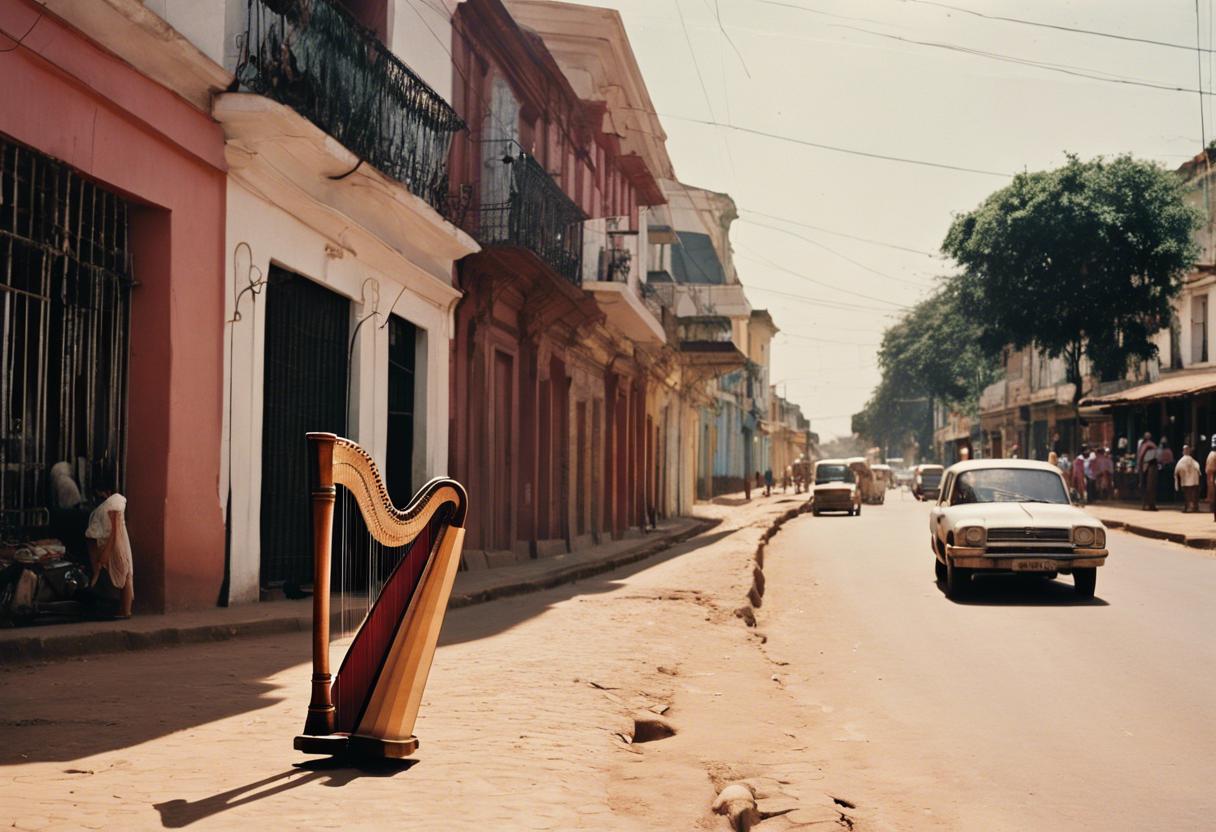Once we prided ourselves on having a musical instrument, the harp, as a national emblem. This could have been a throwback to the de Valeran times – a way of offsetting economic uncertainties with an affirmation of our alleged cultural hegemony. After all, weren’t the harpists greatly esteemed in Gaelic society? Weren’t the harp symbols popularised by the United Irishmen and Daniel O’Connell to buoy up the spirit of the nation?
Nowadays, the harp is a mundane part of our everyday life, showing up on the sparse coins we keep in our pockets for those moments when technology fails us. It graces the brown envelopes we loathe receiving from Revenue, and is seen on the airplane tail surfaces that carry us away from our unpredictable climate. Internationally, the Irish harp has greater visibility as a beer brand logo rather than as Ireland’s national emblem. Unbelievably, Guinness had been using the right-facing harp as its brand for six decades before the State was obliged to use a left-facing harp to avoid infringing the brewery’s trademark. In 1960, Guinness added to the mockery by controversially using the harp name for its latest German lager.
However, we are not unique in viewing the harp as a national symbol. Paraguay, although not officially recognised, has always seen the harp as an integral part of the national consciousness, or the concept of paraguayidad, roughly translated as ‘Paraguayan-ness’. But, unlike Ireland where the harp symbolised national independence, in Paraguay, it was first linked with the colonisers.
Herein lies a story of two harps and their distinct meanings in Paraguay and Ireland, highlighting famous revolutionaries, intriguing sojourns, literary hubs, and even an unexpected revival of an 80s suit.
It is widely accepted that Spanish missionaries first introduced the harp to South America from Europe during the 16th century. A century later, the Jesuits began setting up their initial reducciones amongst the Guaraní tribes in the Paraguay region, integrating the harp into liturgical performances.
Initial Jesuit missionaries in Paraguay included a priest from Limerick, Thomas Fields. Some nationalist Irish historians have tried to credit him with introducing the harp to Paraguay, however, this claim doesn’t hold up to historical scrutiny. Even though Fields was one of the earliest Catholic priests to reach out to the Guaraní tribes in the late sixteenth century, he and a small handful of his Jesuit colleagues who had been dispatched to Paraguay could not set up a permanent mission beyond Asunción at that time. Despite this, they managed to play a crucial role in maintaining the Jesuit’s presence in Paraguay and assisted in the creation of the first Spanish-Guaraní dictionary.
Following the Jesuits’ expulsion from South America in 1767, the use of the harp in Paraguayan society began to shift from religious and liturgical settings. By the 1900s, the Paraguayan arpa had become the de facto national folk instrument. Over time, the arpa was adapted to suit Paraguayan circumstances, made from indigenous tropical wood and fashioned smaller and lighter to ensure portability for folk musicians. Even though the harp’s introduction to Paraguay was due to Europeans, by the 1930s it had morphed into a national cultural symbol, thanks in part to acclaimed arpistas like Félix Pérez Cardozo, who showcased Paraguayan music to international audiences.
During the1950s and 1960s, Paraguayan harpists gained international acclaim and embarked on world tours, the Stroessner dictatorship even endorsed Paraguayan music as a way to align itself with popular forms of the national culture.
In a peculiar manner for South America, the self-identity of Paraguayans has become deeply anchored in the customs and traditions of the native inhabitants, with the harp epitomizing the amalgamation of Guaraní and Spanish heritages. The harp’s symbolism in Europe often links to mystical sounds with Celtic origins – for instance, think of the band Clannad – yet, the Paraguayan variation of the harp is performed with a vibrantly more energetic, cheery and rhythmic style.
In the year 2023, as an acknowledgement of the harp’s significance in Paraguayan culture, a spectacular 15-metre tall statue in the shape of a harp was unveiled. The location for this was along the Costanera of Asunción, a principal promenade that traces the capital alongside the Paraguay river. This introduction was followed by a celebration featuring Paraguayan harp music.
While a similar statue like the one erected in Asunción doesn’t exist, Dublin boasts an even bigger model of a harp situated right in its heart. But contrary to the upright positioning along the river, this harp lays horizontal to it: the expansive 123-metre Samuel Beckett Bridge, designed after an Irish harp laid on its side and named in honour of a renowned literary figure and music aficionado from the country.

